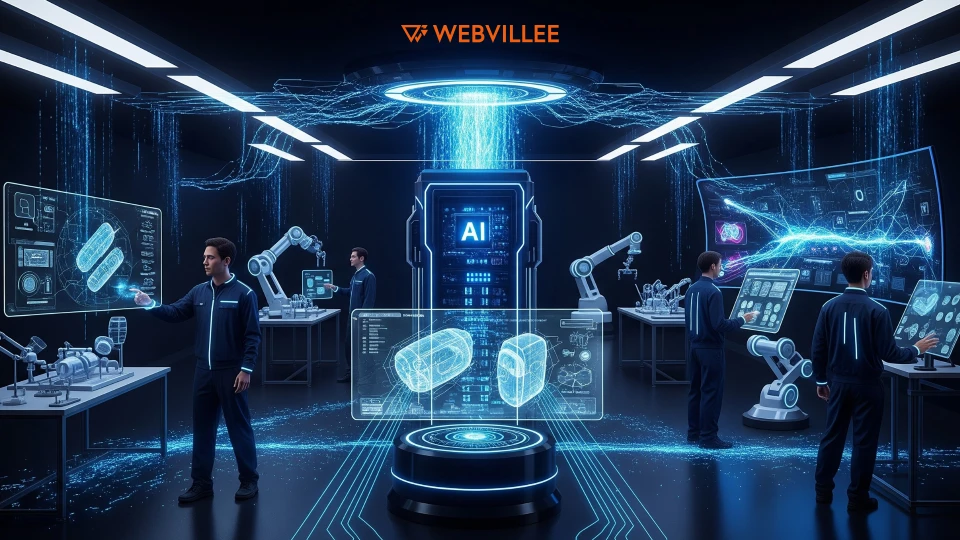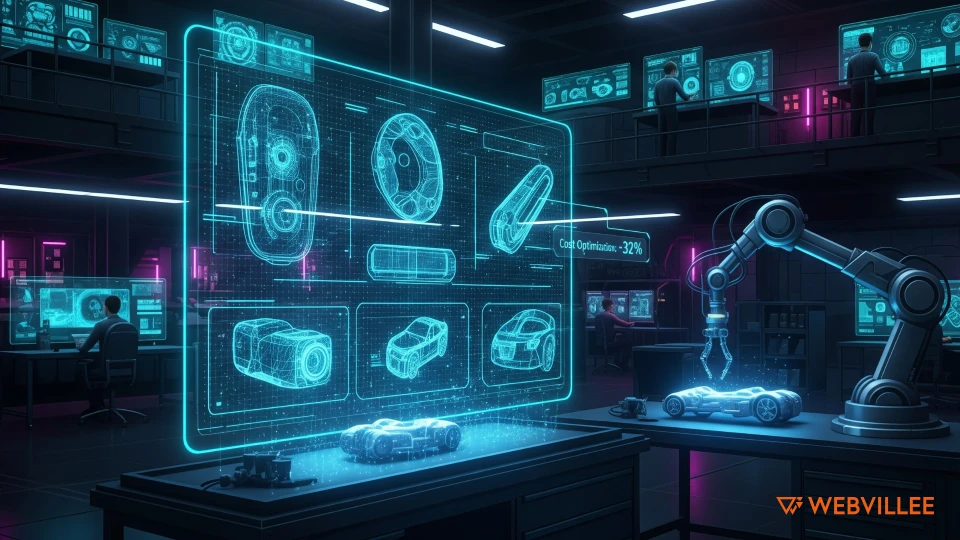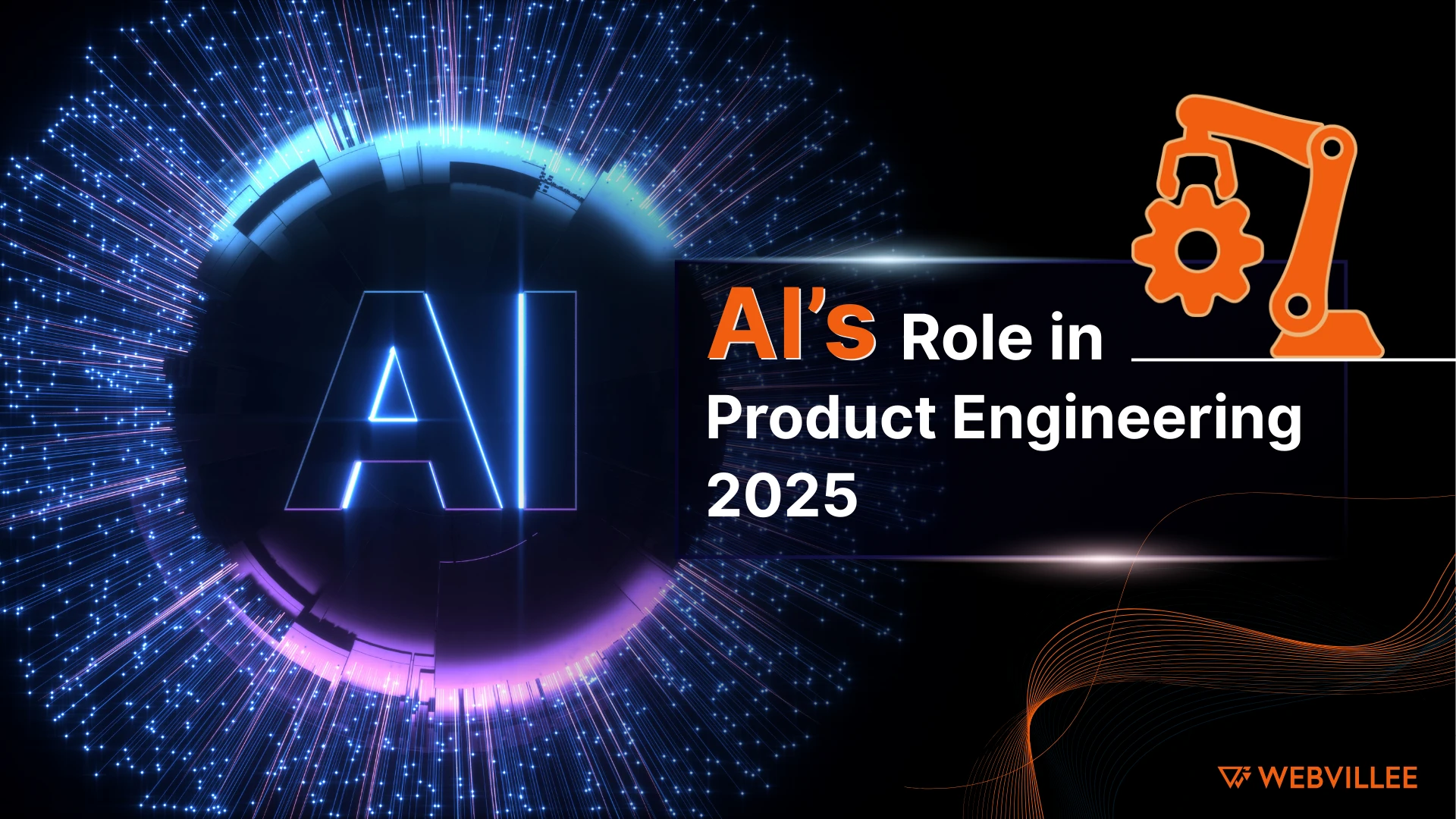AI changing product engineering in 2025 is improving speed, lowering costs, and enabling smarter, customer-focused designs.
Enterprises today face increasing pressure to deliver faster, more reliable products while keeping costs under control. Traditional methods cannot keep pace with customer expectations and market demands. Artificial intelligence provides tools that automate processes, analyze data, and optimize decisions across the product lifecycle.
For business leaders, this shift means product engineering is no longer just about building features. It is about designing smarter systems that adapt, scale, and innovate continuously. AI in product development also enables real-time insights that improve quality and align designs with customer needs.
In this blog, we explore five ways AI is reshaping product engineering in 2025. From accelerating development timelines to enabling innovation, each section explains how AI is transforming business outcomes and why leaders must embrace AI-first strategies to stay competitive.
How is AI accelerating product development in 2025?
AI accelerates product development in 2025 by automating tasks, streamlining workflows, and enabling faster product releases with AI-driven insights.
Traditional product engineering often suffers from long cycles due to manual testing, approvals, and resource bottlenecks. AI product development speed comes from eliminating repetitive tasks and improving efficiency across the entire process.
Key ways AI automation in engineering accelerates development:
- Automated coding and testing: Reduces time spent on repetitive tasks.
- Smart scheduling tools: Allocate resources efficiently to avoid delays.
- Real-time data insights: Highlight potential risks early to speed up decision making.
For example, a company using AI-driven automation can reduce release cycles from months to weeks. By applying machine learning models, errors are detected early, saving time on rework.
With Product Engineering enhanced by AI, enterprises can launch products faster without sacrificing quality. AI automation also ensures teams can focus on innovation rather than routine tasks.
In 2025, faster product development is a competitive necessity. Businesses that adopt AI-driven processes will meet market demands quicker, gain first-mover advantages, and strengthen customer trust through consistent, timely releases.

Why is AI improving product design decisions?
AI improves product design decisions by analyzing customer data and turning insights into actionable recommendations for product teams.
Customer expectations evolve quickly, and relying on outdated assumptions leads to poor results. AI-driven customer insights provide real evidence to guide design choices. This makes product development more aligned with user needs and market trends.
How AI product design enhances decision making:
- Customer insight tools: Collect and analyze behavioral and feedback data.
- Data-driven design decisions: Prioritize features that solve real problems.
- Continuous learning: Adjust designs as customer patterns evolve.
For example, an enterprise using CRM & ERP data with AI can identify purchasing behavior trends and tailor product features to meet those patterns. This ensures the final product is not only functional but also relevant.
AI-driven design also reduces risks. By predicting customer preferences, businesses avoid investing in features that will not be adopted.
In 2025, product engineering is customer-centric. AI empowers businesses to create products that resonate with users, building stronger loyalty and improving long-term growth outcomes.
How does AI reduce costs in product engineering?
AI reduces costs in product engineering by automating workflows, predicting maintenance needs, and optimizing resources.
Enterprises often spend heavily on manual testing, maintenance, and staffing. AI-driven systems identify inefficiencies, streamline operations, and help teams make smarter financial decisions. This makes engineering more cost-effective without reducing quality.
Key ways AI cost savings in engineering are achieved:
- Predictive maintenance AI: Detects potential failures before they cause downtime.
- Automated testing: Reduces the need for manual QA processes.
- AI-driven cost optimization: Allocates resources based on real usage data.
For example, when a company integrates Cloud Solution tools with AI analytics, it can monitor performance metrics in real time and cut unnecessary expenses. Cloud-based systems also allow dynamic scaling, ensuring businesses pay only for what they use.
In 2025, AI-driven automation is reshaping financial efficiency in product engineering. Predictive systems prevent waste, while real-time insights improve budget allocation. This helps enterprises achieve more with less, allowing funds to be redirected toward innovation and market expansion.

How is AI improving product quality and reliability?
AI improves product quality and reliability by using predictive analytics and automated testing to identify issues before they reach customers.
Traditional quality checks often occur late in the process, leading to expensive fixes. AI testing tools continuously analyze system performance, detect anomalies, and flag risks early. This ensures higher accuracy and stability across product lifecycles.
Key ways AI enhances product quality:
- Automated AI testing: Finds bugs and inefficiencies during development.
- Predictive analytics for reliability: Anticipates failures and prevents them.
- Data feedback loops: Learn from user behavior to refine quality further.
For example, enterprises that adopt Java Development frameworks supported by AI gain access to intelligent testing environments. These systems test thousands of variables faster than any manual process, ensuring reliable performance across releases.
In 2025, product quality is built, not tested, at the end. AI tools monitor, learn, and adapt continuously, creating products that are more dependable and user-focused. Reliability becomes a competitive advantage when AI drives the quality process.
How does AI enable future-ready product innovation?
AI enables future-ready product innovation by helping businesses design adaptive, scalable, and intelligent systems that evolve with market demands.
Innovation in 2025 depends on how quickly companies can use AI insights to create meaningful products. AI identifies gaps, predicts future needs, and suggests new opportunities, allowing enterprises to innovate faster and smarter.
How AI innovation in product engineering drives future readiness:
- Scalable AI product solutions: Build flexible architectures that expand easily.
- AI forecasting tools: Predict trends and enable proactive innovation.
- Continuous learning models: Adapt product designs to new customer behaviors.
For example, integrating Digital Transformation practices with AI allows companies to test prototypes virtually and analyze user responses instantly. This shortens innovation cycles while reducing risk.
In 2025, AI-driven innovation helps businesses stay relevant in changing markets. By creating future-ready AI design systems, enterprises not only launch better products but also maintain long-term agility and competitiveness.
Conclusion
AI changing product engineering in 2025 is redefining how businesses create, test, and launch products. It accelerates development, enhances design accuracy, cuts costs, improves quality, and powers continuous innovation.
For decision makers, the message is clear. Embracing AI-first engineering is not about following a trend, it is about building sustainable growth. Companies that adopt automation, predictive analytics, and intelligent design systems position themselves to lead in performance, efficiency, and customer satisfaction.
The future of product engineering lies in data, adaptability, and precision. AI turns those elements into measurable business outcomes.
Get in touch with Webvillee to explore AI-powered product engineering solutions tailored to your enterprise growth.

